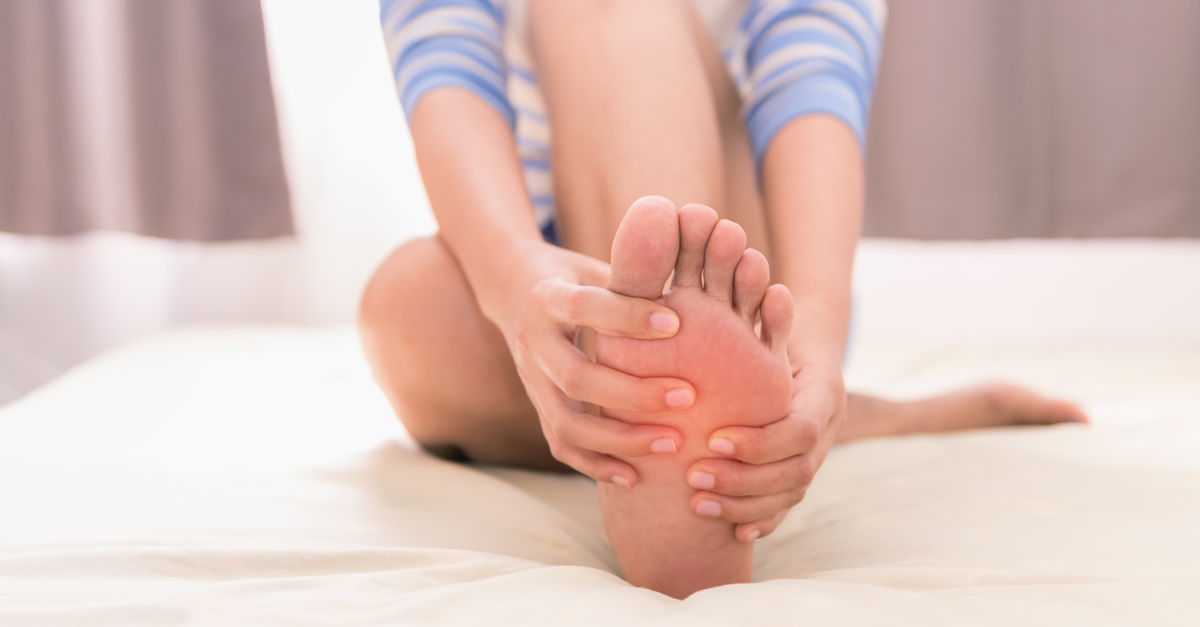It can easily send you into panic mode—suddenly not being able to use one or both feet. Called foot drop, it’s not a disease in itself but rather a sign of a nerve or muscle problem that needs attention.
WHAT HAPPENS
The muscles you use to move each foot when you walk, run and move in any way are located in the front part of your lower leg. They’re stimulated by the peroneal nerve, which starts above your knee, curls over the outside of your knee and runs down into the muscles of your lower leg. With foot drop, those muscles can go limp and are no longer able to lift the foot up, making walking a difficult task. Your lower leg and foot can feel like a dead weight, and without a mobility device, you can easily loose balance and trip over the foot when you try to walk.
Important: The first sign of foot drop may be difficulty lifting your foot as you go up stairs or stepping up onto a curb even before you start having gait issues. You may also note shooting pain or numbness of your leg and foot. Don’t ignore these symptoms. Finding the cause of foot drop early gives you a better chance at successful treatment.
WHAT CAUSES IT
Foot drop is a recognized complication of many neurological conditions including stroke, traumatic brain injury, multiple sclerosis, polio, muscular dystrophy and amyotrophic lateral sclerosis—and patients are often prepared by their doctors to expect it. In these patients, foot drop is often permanent, and reconstructive surgery to improve gait and balance may be the best treatment.
But what about when foot drop occurs, but it is not related to head- or brain-related injury or central neurological condition? Then it’s typically caused by a problem that originates with the nerve or muscles of the lower leg.
An injury to the peroneal nerve along the outside of the knee is the most common cause of foot drop. This section of the nerve is particularly vulnerable—it’s very close to the top of the outer shinbone and just under the skin, so it can easily be squeezed and damaged. When this happens, it’s called a nerve compression syndrome.
Compression can come from a crushing blow to the outside of the knee, damage to the nerve during knee surgery, a knee cast that’s too tight or even from frequently sitting with legs crossed, kneeling (think gardening) or squatting.
Compression can also occur after any protracted surgery during which the knees are pressed against stirrups used to keep legs elevated, such as in gynecologic and colorectal surgeries and during childbirth. The effect can come quickly—patients might notice a numb feeling in the recovery room.
One surprising risk factor for compression is having weight-loss surgery. Severe weight loss can thin the padding above and below the nerve, leaving it more vulnerable to damage. On top of that, gastric-bypass procedures, in particular, may lead to a deficiency in B vitamins that are important for nerve health. This is because food gets rerouted past certain parts of the digestive system where nutrient absorption would otherwise take place. (Weight-loss surgery patients should always take nutritional supplements as directed.)
Less frequent causes of foot drop include lower spine conditions (such as a pinched nerve due to a herniated disc, the narrowing of the spine called spinal stenosis or nerve damage following lower-back surgery)…hip-replacement surgery (if the sciatic nerve, which passes down the back of the leg, is stretched too far during the procedure or is damaged by pressure from a blood clot)…and injury to the front of the leg (in which the muscles that move the foot are severely damaged).
DIAGNOSING AND TREATING FOOT DROP
A history of recent surgery or having back problems can be an important clue. Your health-care provider will be able to tell a lot by the way you walk. You might need imaging studies and a nerve conduction study, useful for predicting whether foot drop will improve over time.
Treatment depends on the cause. Some nerve or muscle injuries will recover with physical therapy and time. As you heal, you might need to wear a boot or splint that supports the back of the leg and extends under the foot to help you walk without tripping.
Some people may benefit from functional electrical stimulation. This uses a device worn over the leg that emits electrical pulses through skin electrodes to stimulate the leg muscles during walking.
If the peroneal nerve is severely damaged or cut anywhere along its course, a nerve graft might be the best treatment. If your leg muscles are severely damaged by trauma or threatened by swelling from trauma, you may need emergency surgery to open up muscle “compartments” to save the muscles.
For foot drop that will not improve with time or treatment, reconstructive surgery with a tendon transfer is the most common option. The surgeon moves a working tendon from the side and brings it forward attaching it to a bone on the top of the foot that will allow foot to be lifted up while walking. Recovery takes about six weeks and is followed with physical therapy.


